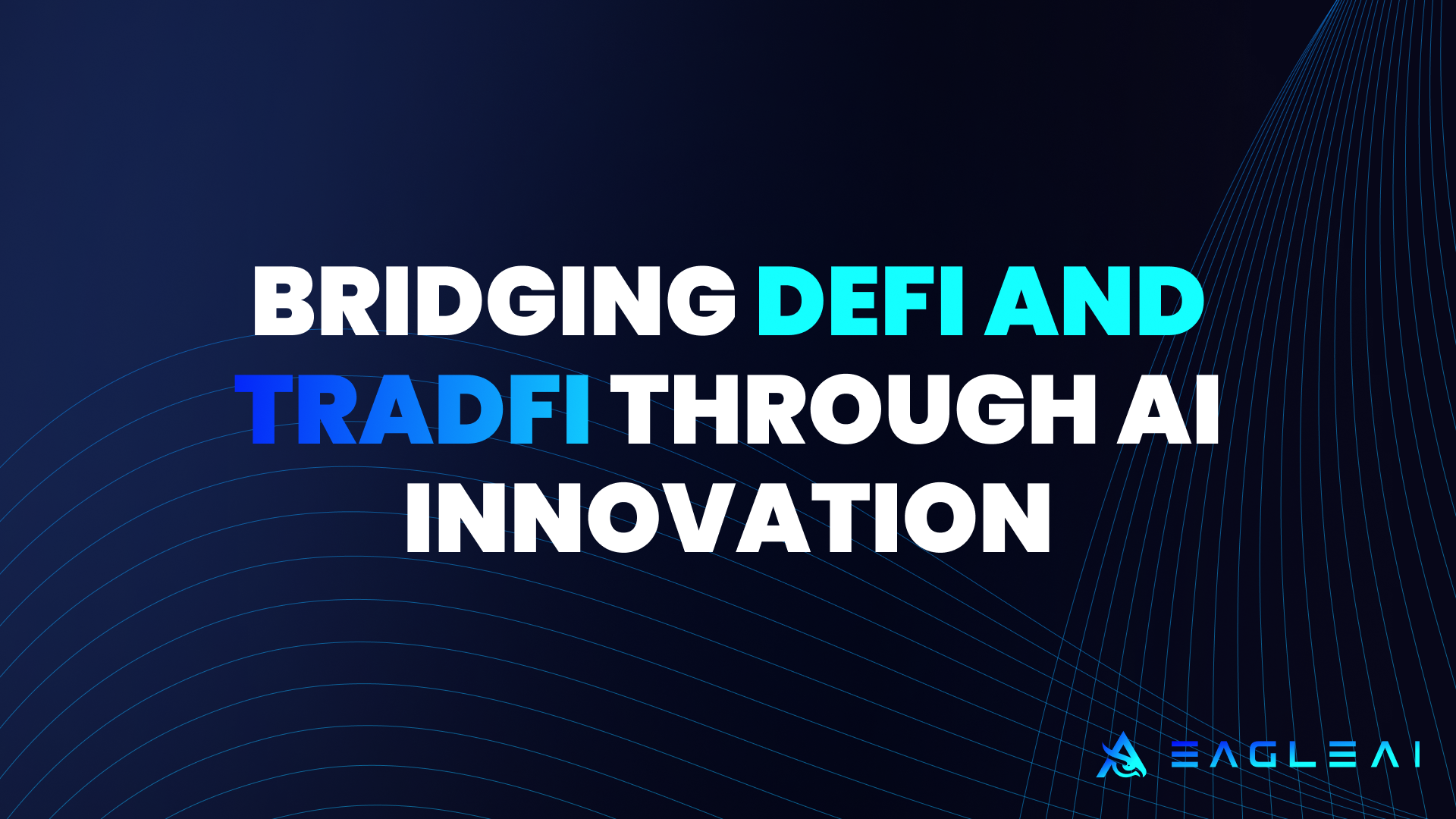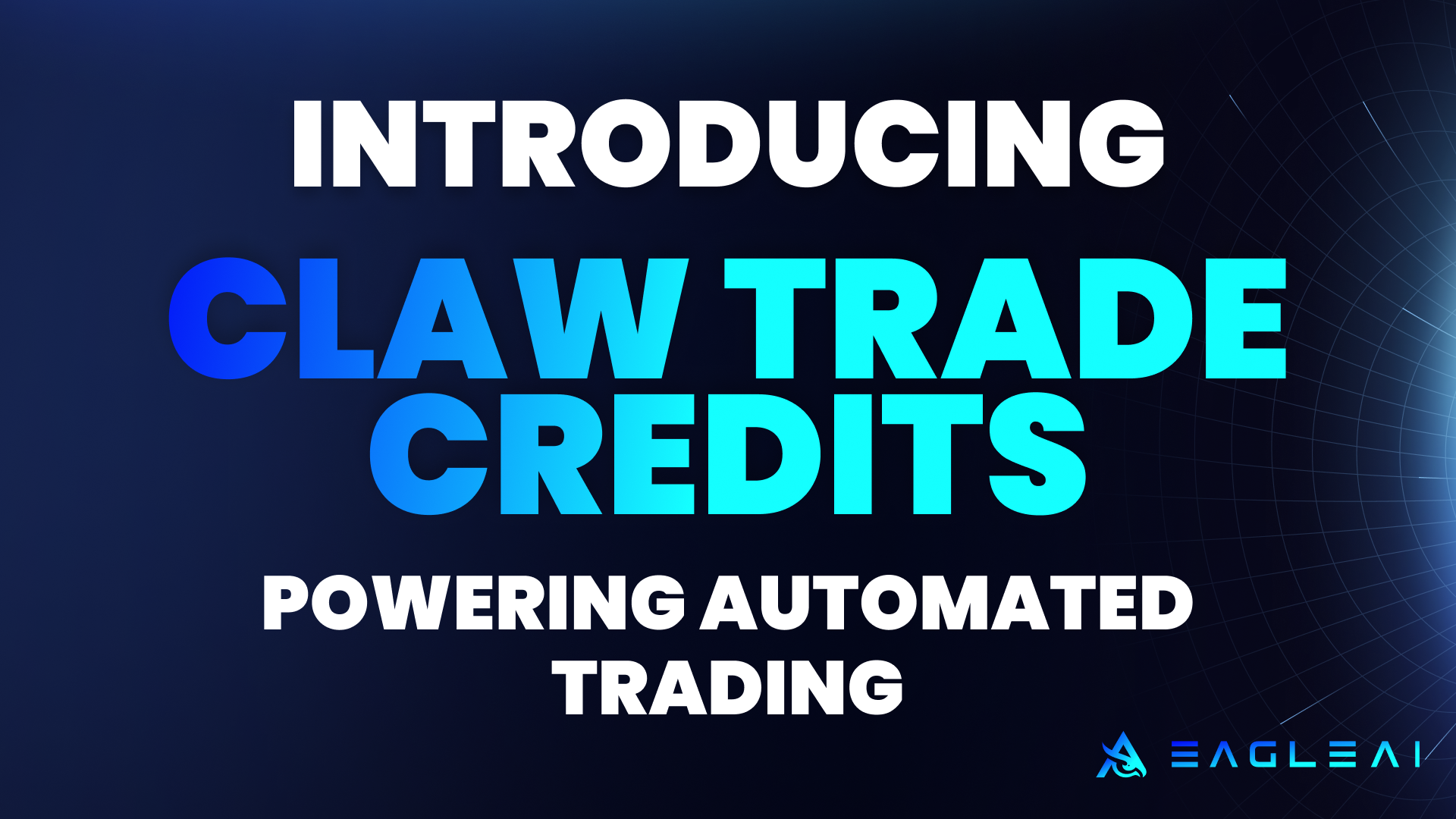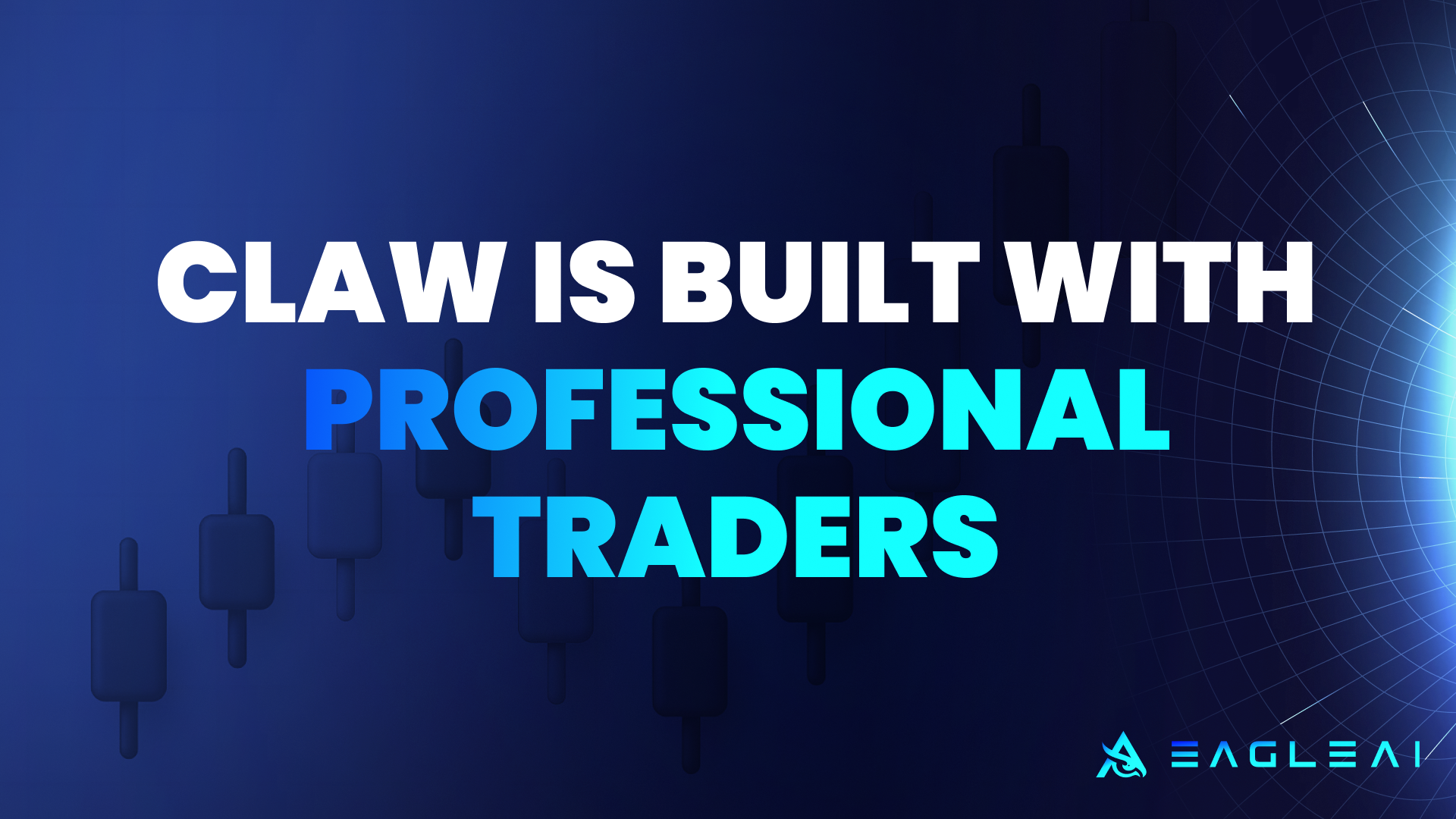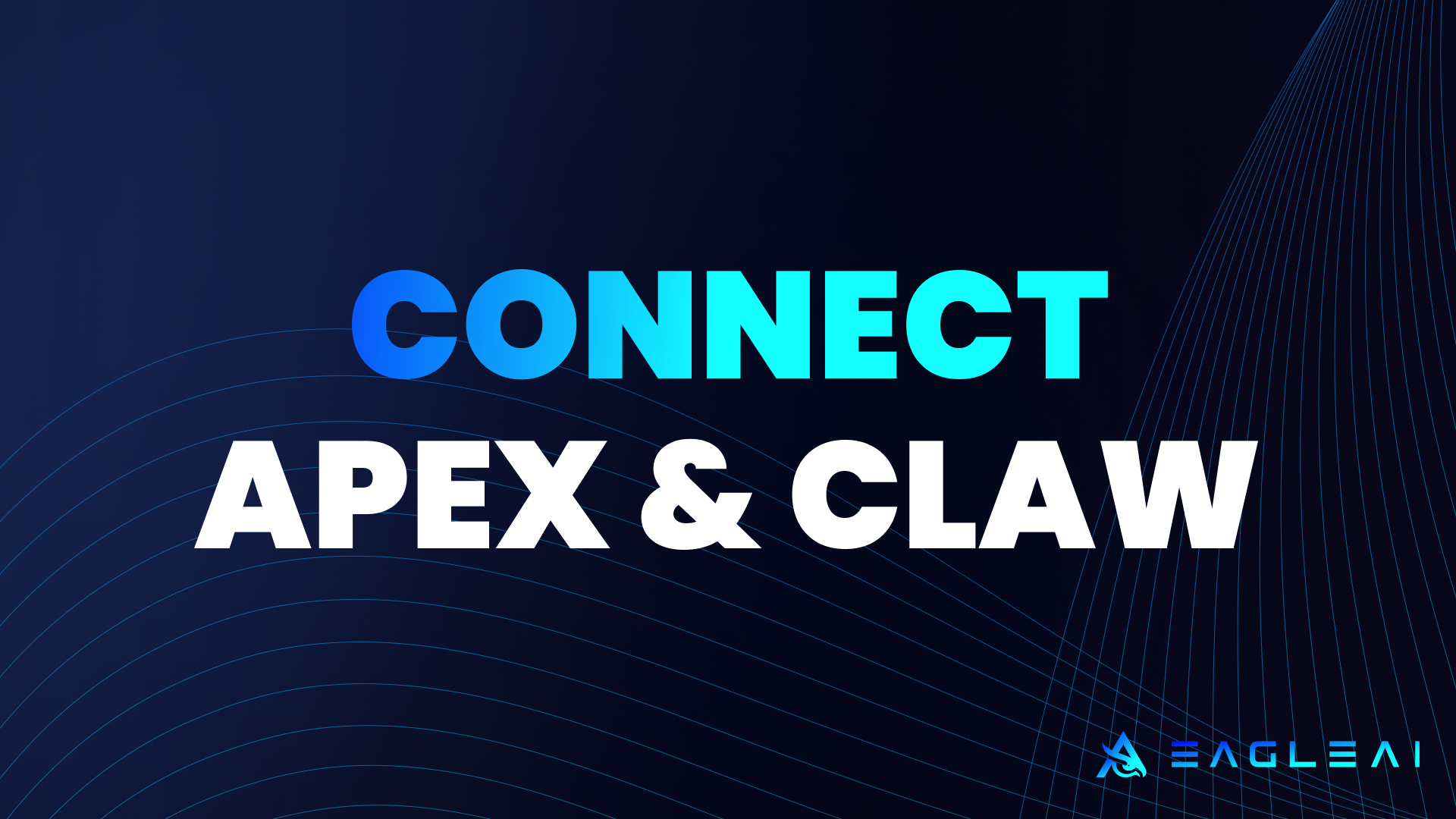Bridging DeFi And TradFi Through AI Innovation
AI is transforming finance by linking DeFi and TradFi, improving RWA valuation, liquidity, risk analysis and compliance. A new era of hybrid finance is emerging, driven by data and intelligent automation.

Low-code tools are going mainstream
Purus suspendisse a ornare non erat pellentesque arcu mi arcu eget tortor eu praesent curabitur porttitor ultrices sit sit amet purus urna enim eget. Habitant massa lectus tristique dictum lacus in bibendum. Velit ut viverra feugiat dui eu nisl sit massa viverra sed vitae nec sed. Nunc ornare consequat massa sagittis pellentesque tincidunt vel lacus integer risu.
- Vitae et erat tincidunt sed orci eget egestas facilisis amet ornare
- Sollicitudin integer velit aliquet viverra urna orci semper velit dolor sit amet
- Vitae quis ut luctus lobortis urna adipiscing bibendum
- Vitae quis ut luctus lobortis urna adipiscing bibendum
Multilingual NLP will grow
Mauris posuere arcu lectus congue. Sed eget semper mollis felis ante. Congue risus vulputate nunc porttitor dignissim cursus viverra quis. Condimentum nisl ut sed diam lacus sed. Cursus hac massa amet cursus diam. Consequat sodales non nulla ac id bibendum eu justo condimentum. Arcu elementum non suscipit amet vitae. Consectetur penatibus diam enim eget arcu et ut a congue arcu.

Combining supervised and unsupervised machine learning methods
Vitae vitae sollicitudin diam sed. Aliquam tellus libero a velit quam ut suscipit. Vitae adipiscing amet faucibus nec in ut. Tortor nulla aliquam commodo sit ultricies a nunc ultrices consectetur. Nibh magna arcu blandit quisque. In lorem sit turpis interdum facilisi.
- Dolor duis lorem enim eu turpis potenti nulla laoreet volutpat semper sed.
- Lorem a eget blandit ac neque amet amet non dapibus pulvinar.
- Pellentesque non integer ac id imperdiet blandit sit bibendum.
- Sit leo lorem elementum vitae faucibus quam feugiat hendrerit lectus.
Automating customer service: Tagging tickets and new era of chatbots
Vitae vitae sollicitudin diam sed. Aliquam tellus libero a velit quam ut suscipit. Vitae adipiscing amet faucibus nec in ut. Tortor nulla aliquam commodo sit ultricies a nunc ultrices consectetur. Nibh magna arcu blandit quisque. In lorem sit turpis interdum facilisi.
“Nisi consectetur velit bibendum a convallis arcu morbi lectus aecenas ultrices massa vel ut ultricies lectus elit arcu non id mattis libero amet mattis congue ipsum nibh odio in lacinia non”
Detecting fake news and cyber-bullying
Nunc ut facilisi volutpat neque est diam id sem erat aliquam elementum dolor tortor commodo et massa dictumst egestas tempor duis eget odio eu egestas nec amet suscipit posuere fames ded tortor ac ut fermentum odio ut amet urna posuere ligula volutpat cursus enim libero libero pretium faucibus nunc arcu mauris sed scelerisque cursus felis arcu sed aenean pharetra vitae suspendisse ac.
TLDR
Bridging DeFi and TradFi with AI is shaping the next phase of global finance. Traditional markets hold deep liquidity, while DeFi moves faster and gives you new access to assets and yields. AI sits between both systems by analysing on-chain activity, credit data, market sentiment and real-world asset flows at a speed humans can’t match. This helps price tokenised real estate accurately, assess counterparty risk across chains and banks, automate compliance, and manage liquidity across fragmented markets. As institutions adopt DeFi strategies and RWA markets expand, AI becomes the intelligence layer powering safer trading, better credit scoring and scalable hybrid finance.
Bridging DeFi and TradFi with AI is no longer a theoretical idea. It’s happening across tokenised real estate, RWA markets, digital credit, and institutional trading desks that now monitor both on-chain and off-chain flows. You might hear the phrase “hybrid finance” thrown around, but the gap between these systems is still wide. DeFi moves fast, offers open access, and runs on transparent infrastructure. TradFi runs on deep liquidity, credit guarantees and established rules. AI sits between them and gives both sides a shared language for risk, liquidity and valuation.
This shift matters because these systems weren’t built to communicate with each other. They grew from different assumptions, different data standards, and different ways of handling risk. The disconnect slows adoption and blocks capital from moving cleanly across markets. It also limits innovation. Traditional investors miss DeFi’s yield opportunities. DeFi projects miss access to stable, long-term capital.
When these systems stay separate, both lose.
Why Bridging DeFi And TradFi Matters For The Future Of Finance
Let’s start with the basics so you’re clear on what we’re talking about.
- DeFi refers to protocols that let you trade, lend, borrow and invest without banks or brokers. It’s programmable, open and global. It removes gatekeepers and lets you interact with markets directly.
- TradFi covers banks, asset managers, broker-dealers, insurers, and the full structure that supports the global financial system. It offers credit guarantees, regulated custody and long-standing consumer protection rules.

Neither one is “better”. They’re useful in different ways. That’s why merging them creates value.
The numbers make the scale clear. Traditional finance manages hundreds of trillions in global financial assets. DeFi holds a tiny fraction of that but moves with far more speed. Meanwhile, tokenised real-world assets reached roughly US $13–14 billion by the end of 2024, and credible forecasts suggest this could pass US $1 trillion before the end of the decade. Growth like that happens only when large institutions start paying attention.
When DeFi and TradFi operate together, capital moves more efficiently, markets price assets with better data, and investors get exposure to a broader set of opportunities. Integration gives traditional investors easy access to digital assets and DeFi yields. It gives DeFi protocols a path to stable funding and a link to regulated markets.
Most importantly, integration reduces dependence on a single system. If you rely only on DeFi, you’re exposed to smart-contract risk and liquidity shocks. If you rely only on TradFi, you get slower innovation and higher friction. Both sides benefit from diversification.
AI is what lets that integration happen at scale.
How AI Unlocks Synergies Between Decentralised And Traditional Markets
AI bridges these systems because it can read data from both, process it at speed, and turn it into insight. It makes hybrid finance possible by creating a shared data environment.
Machine-learning models read on-chain transactions, order-book shifts, lending flows, sentiment patterns and credit records. NLP systems analyse regulatory filings, macro headlines, research reports and social commentary. Predictive analytics models identify links between traditional markets and digital assets that humans wouldn’t spot in time.
DeFi relies on public data streams. TradFi relies on private books and credit records. AI can hold both in the same frame.
Instead of listing every difference between these systems, think of it like this:
DeFi gives you transparency. TradFi gives you structure. AI gives you intelligence.
AI makes it possible to build unified risk profiles that combine wallet activity with credit scoring. It connects DeFi token sentiment with traditional asset fundamentals. It strengthens security by cross-checking smart-contract behaviour with banking-grade fraud-monitoring patterns.
Platforms like Eagle AI Labs use this approach by analysing both on-chain and off-chain inputs. That means your decisions draw on a wider set of signals: liquidity patterns, whale flows, credit risks, news spikes, regulatory shifts and sentiment swings across thousands of channels.
This is how AI creates a practical bridge between two systems that were never designed to meet.
Examining Real-World Asset Tokenisation For Mainstream Finance
Real-world assets sit at the centre of this convergence. The idea is simple: take an asset that traditionally trades privately or with limited access — real estate, bonds, commodities — and represent it as a digital token. You can then trade it on blockchain rails with faster settlement and lower fees.
Tokenised real estate is a clear example. A property worth £500,000 can be represented as digital shares, giving you fractional access instead of needing all the capital upfront. This creates a path for retail and institutional investors to get exposure without dealing with slow paperwork or restricted access. It also creates liquidity for assets that were historically locked.

Tokenisation works for more than housing. It now includes short-term debt, treasuries, invoices, carbon credits and even art. You get transparency, 24/7 markets and the ability to move assets across platforms without long settlement cycles.
But tokenisation only works at scale when pricing is accurate. That’s where AI matters.
AI-Driven RWA Valuation
Valuing a tokenised asset is different from valuing its underlying real-world counterpart. You need pricing models that read both on-chain data and traditional market signals. AI can analyse transaction history, economic reports, comparable properties, credit conditions and liquidity shifts — all at speed.
It identifies when a tokenised asset diverges from its real value. That creates arbitrage opportunities and supports automated strategies that take advantage of mispricing.
For example: if a tokenised real-estate asset on a blockchain trades below its implied cash-flow value, AI can flag the gap before the market catches up. This helps investors find opportunity and supports better long-term pricing.
Eagle AI Labs’ Claw platform operates in this space by tracking on-chain signals and modelling the behaviour of both tokenised and traditional markets. It gives you an early view of where markets might move.
Overcoming Risk And Compliance Gaps With AI-Driven Insights
Bridging systems means you carry the risks of both. That adds complexity. AI helps reduce that complexity by building a single view of risk across chains, exchanges, custodians and banks.
Identifying Counterparty Risk
Counterparty risk becomes harder when participants operate across different frameworks. Transparent on-chain behaviour doesn’t always map cleanly to long-standing credit models in banking. AI can blend these signals by analysing wallet reputation, lending history, smart-contract interactions, credit exposure, transaction anomalies and historical defaults.
Instead of needing two separate risk checks — one for DeFi and one for TradFi — AI generates a broader view. It can flag concerns early, detect unusual patterns and give you confidence that your trading partners are reliable.
This transparency drives adoption. TradFi players won’t interact with DeFi systems unless they trust them. DeFi users won’t accept TradFi entry unless the risk is clear. AI reduces that friction.
Regulatory Monitoring
Compliance is one of the biggest barriers to hybrid finance. Rules vary widely across jurisdictions and systems. Manual tracking is slow and error-prone. AI can scan regulations, update compliance models, and flag issues before they escalate.
It can check transactions against AML and KYC requirements. It can map flows between chains and exchanges. It can identify regulatory risks tied to tokenisation or liquidity movements. It reduces manual overhead and improves reaction time when rules shift.
Eagle AI Labs prioritises transparency and reporting. That’s essential for institutions testing DeFi for the first time.
Addressing Liquidity Across On-Chain And Off-Chain Systems
Liquidity is the hardest part of merging DeFi and TradFi. These systems use different rails, move at different speeds and settle differently. That leads to fragmentation. AI makes this manageable.
Balancing On-Chain And Off-Chain Capital
AI models can track liquidity across exchanges, on-chain pools, custodians and banks. They show where capital is sitting idle, where markets are tight, and where pricing gaps appear. They can route trades through the most efficient paths and reduce costs by picking the right venue or chain.
Cross-chain bridges, automated routing engines and next-generation market-making tools are all moving toward better integration. AI helps them allocate capital more effectively. It also helps you decide when to keep assets on-chain, move them off-chain or split exposure.
Algorithmic Liquidity Discovery
Predictive models can anticipate where liquidity will appear next. They read trading patterns across DeFi and TradFi, detect accumulation phases, and forecast volume. This leads to smoother execution, reduced slippage and better trade entry.
Claw supports this by giving you visibility into order flow, liquidation pressure, directional models and liquidity distribution. It makes it easier to understand how markets move and where opportunity might surface.
Looking Ahead: Bringing AI, DeFi And TradFi Together
Hybrid finance is moving faster than many expect. Institutions are experimenting with tokenised products. Banks are testing blockchain settlement. Asset managers are looking at on-chain risk metrics. Retail investors are gaining access to assets that used to be out of reach.
Over the next one to three years, expect larger institutions to enter DeFi, more clarity around tokenisation and regulation, and stronger demand for AI-powered market analysis. Retail adoption will follow its own path, influenced by better tools and wider access.
There are still barriers. Interoperability between blockchains is inconsistent. Regulatory frameworks change quickly. Data standards differ. None of these are solved completely yet. AI will continue to make the gaps smaller, but the industry needs ongoing coordination.
Eagle AI Labs is building the infrastructure that supports this transition. If you want to see how hybrid finance feels in practice, explore Claw at https://app.eagleailabs.com.
Frequently Asked Questions About AI-Driven DeFi
How can small investors benefit from AI in DeFi?
AI gives retail investors access to analysis and insight that used to require specialised trading desks. It simplifies complex signals and reduces guesswork.
What makes AI essential for bridging traditional and decentralised finance?
AI processes large volumes of cross-system data at speed. It identifies links between markets, flags risks early and creates a shared view across two very different systems.
How are regulatory frameworks evolving for AI-powered financial bridges?
Regulators are building clearer rules for tokenised assets, automated trading and AI-assisted compliance. Many platforms now treat compliance automation as part of their core design.

Advanced AI technology for institutional-grade market intelligence.


